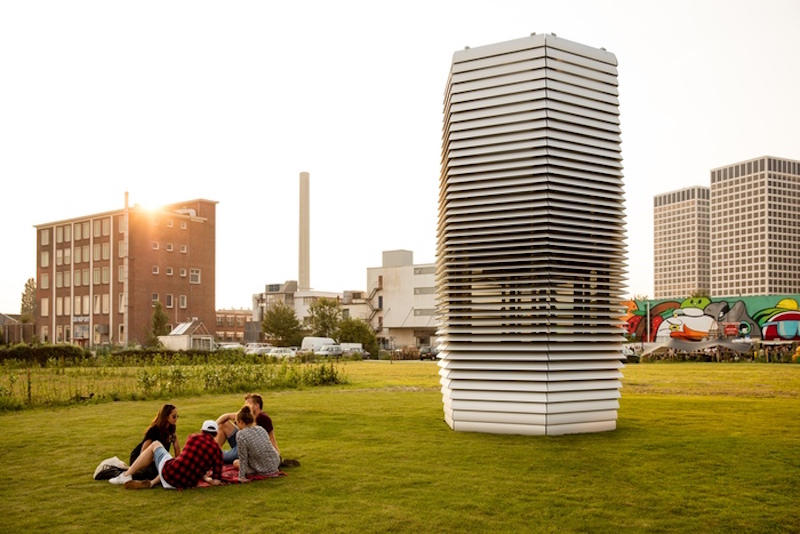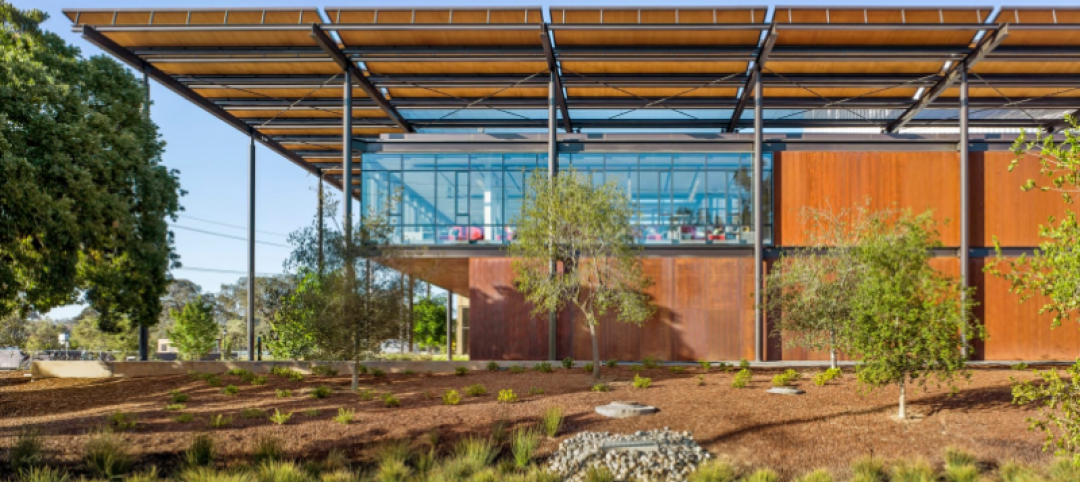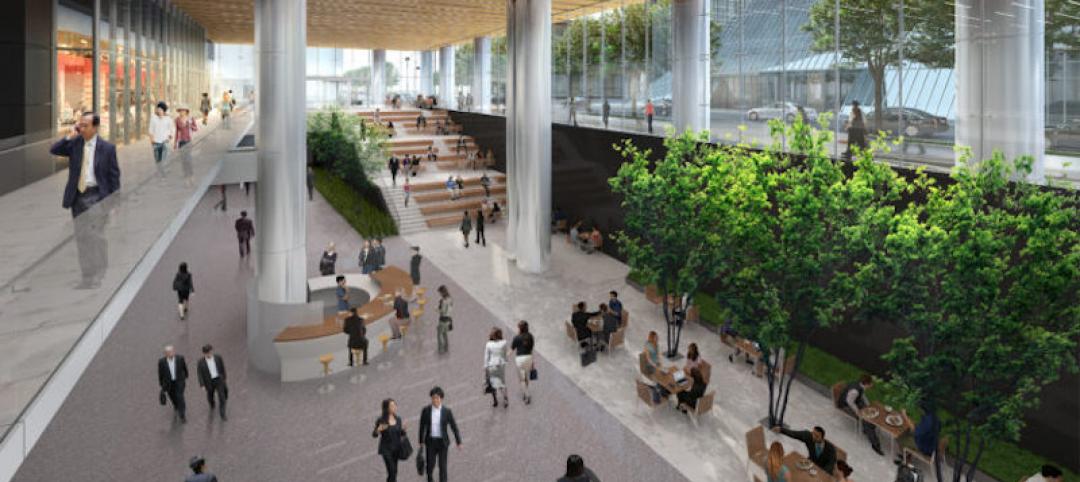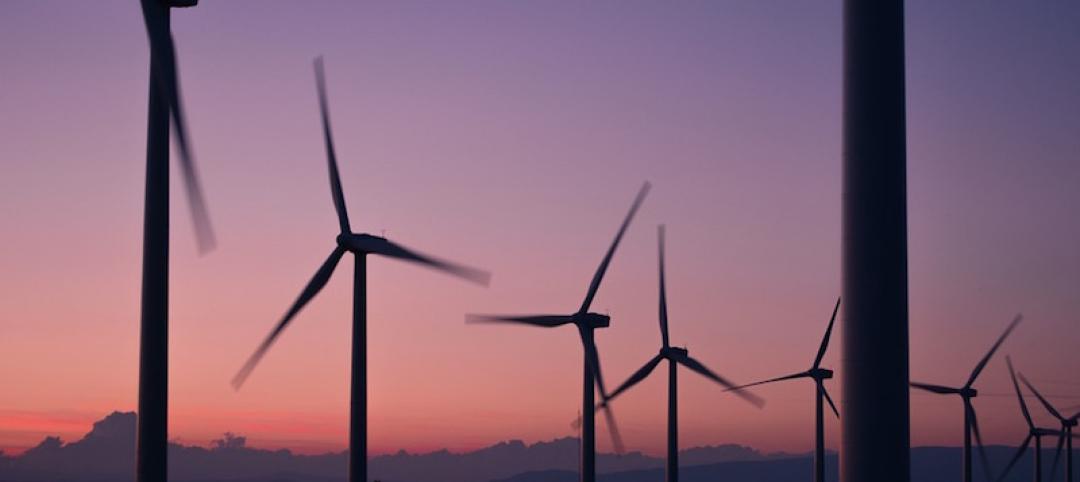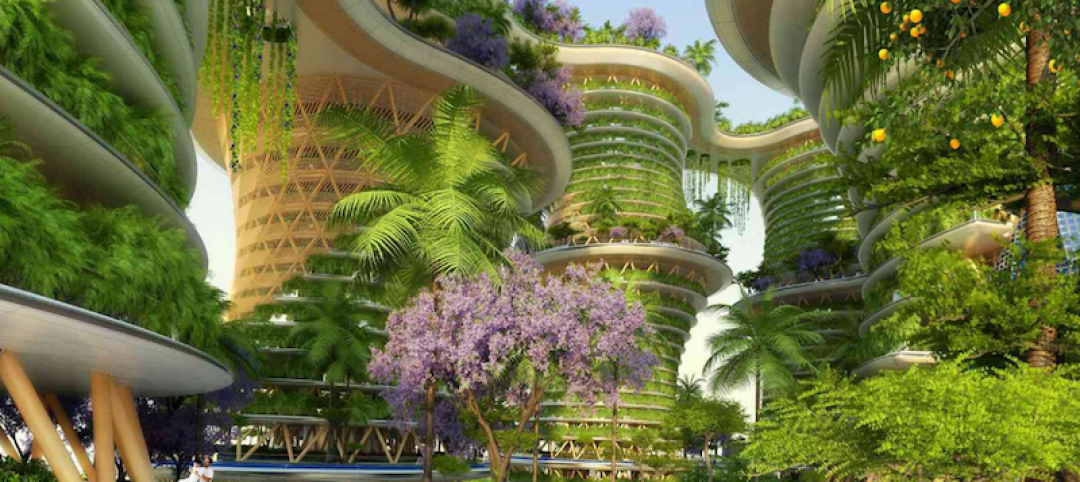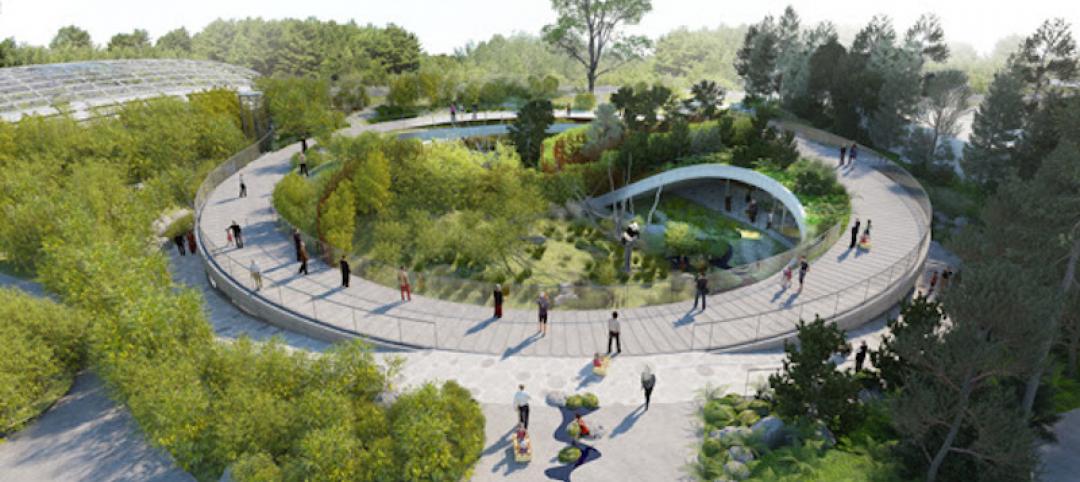According to the World Health organization, around 2.4 million deaths that occur in China every year can be attributed to air pollution. The thick pollution found in many rapidly developing Chinese cities creates and exacerbates asthma and cardiovascular issues, resulting in premature death.
As Architectural Digest reports, new, stricter emissions regulations are stymieing the amount of dangerous particulate matter in the air, but pollution levels are still well above what is considered safe or acceptable.
If only someone could develop a scaled-up version of a common indoor air purifier that could be used to help purify the air outside, maybe some relief could finally come to many smog-filled cities. But that’s not plausible, is it? Well, apparently it is, as someone has done just that. A Netherlands-based team led by Dutch designer Daan Roosegaarde has created what is essentially a 23-ft tall outdoor air purifier to help clean the air of some of the world’s most polluted cities.
The structure uses ion technology to attract about 30,000 cubic meters of pollution per hour and operates almost exclusively on wind energy. While the amount of pollution one of these towers can filter is just a drop in the bucket for China’s polluted cities, deploying them in large numbers around the country could create a significant impact. Similarly to photovoltaic solar panels, one may not provide much benefit, but when used in large numbers, their output increases exponentially.
In an effort to raise funds for the project, Roosegaarde launched a Kickstarter campaign where backers could receive cubes, rings, and cufflinks made from the compressed particulate matter, mainly carbon, collected from the filter. According to the Kickstarter page, each Smog Free ring acts as a symbol of 1000 cubic meters of clean air.
The campaign raised €113,153, easily surpassing its goal of €50,000. It is thanks to the funds raised through the Kickstarter campaign that allowed the Smog Free Project to travel and open in Beijing on Sept. 29. The filter will also travel to additional Chinese cities and is looking into traveling to India and other countries around the world, as well.
Related Stories
Sustainability | Apr 20, 2017
The American Institute of Architects select the 2017 COTE Top Ten Awards
In its 21st year, the Top Ten Awards highlight projects that exemplify the integration of great design and great performance.
Sustainability | Apr 19, 2017
Embracing the WELL Building Standard: The next step in green
When you consider that 90% of our time is spent in buildings, how these environments can contribute to workplace productivity, health, and wellness is the logical next step in the smart building movement.
Multifamily Housing | Apr 18, 2017
Hanging Gardens-inspired CLT residential development proposed for Birmingham
Garden Hill will provide an ‘oasis-like residence’ for Birmingham’s growing, multicultural student population.
Healthcare Facilities | Apr 14, 2017
Nature as therapy
A famed rehab center is reconfigured to make room for more outdoor gardens, parks, and open space.
Green | Apr 14, 2017
Sunqiao looks to bring agriculture back to Shanghai’s urban landscape
Vertical farms will bring new farmable space to the city.
Sustainability | Apr 13, 2017
How to make a concrete bunker livable
SOM’s design for New York’s second Public Safety Answering Center leans on strategically placed windows and the outdoor environment.
Green | Apr 11, 2017
Passivhaus for high-rises? Research demonstrates viability of the stringent standards for tall residential buildings
A new study conducted by FXFOWLE shows that Building Teams can meet stringent Passivhaus performance standards with minimal impact to first cost and aesthetics.
Codes and Standards | Apr 6, 2017
Product-specific EPDs seen as key aid to earning green building credits
The product-specific EPDs allow designers to more quickly earn a LEED v4 credit in the Materials & Resources category.
Sustainability | Apr 4, 2017
Six connected CLT towers create an urban forest in India
The mixed-use towers would each rise 36 stories into the sky and connect via rooftop skybridges.
Green | Mar 29, 2017
Copenhagen Zoo and BIG unveil yin yang-shaped panda habitat
The new habitat will sit between two existing buildings, including the Elephant House designed by Norman Foster.


